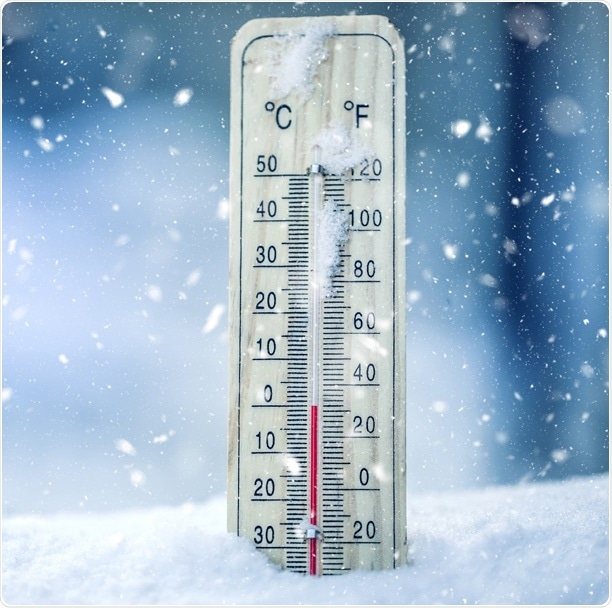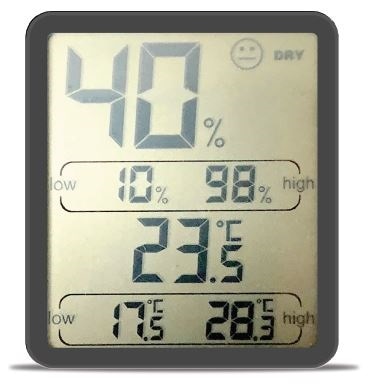For a large number of industries and applications, monitoring of cold storage is an absolute necessity. The materials held in cold storage by biology and pharma labs can be worth tens of thousands of dollars, and it is vital that these remain at a sufficiently low temperature to order to avoid being rendered unusable.
Quality systems and federal regulations, such as 21 CFR Part 11, frequently demand that temperature in freezers and refrigerators is fully documented.
Likewise, in order to avoid spoilage and to ensure compliance with federal regulations such as the Food Safety Modernization Act (FSMA), food service and storage facilities must maintain low temperatures for thousands of dollars’ worth of food.
In some instances, the samples stored in freezers cannot be assigned a simple monetary value. In the USA in 2018, two separate fertility clinics suffered cryo failures, resulting in the loss of thousands of embryos and eggs stored for those hoping to have children.
With this in mind, what are the options for protecting valuable samples in cold storage?
Introduction
Whatever the particular quality standards or codes of compliance relevant to your industry, an effective temperature monitoring program should be able to answer these key questions:
- Does my temperature monitoring device offer a high level of accuracy?
- Are we paying close attention to our cold storage – monitoring at regular points and taking action where conditions beyond standard thresholds are detected?
- Are the records we keep adequate to guarantee our samples remain intact and viable?
- If our industry is regulated, are we keeping adequate records to be compliant with regulatory requirements?
In fundamental terms, there are four options for monitoring fridge/freezer temperatures:
- Manual thermometers
- Chart recorders
- Data Loggers
- Wireless IoT devices
This article will provide a short outline of each method, a description of how it is typically used and what the benefits and drawbacks are of each method.

Thermometers
Thermometers have been utilized for centuries and are the simplest technique through which to monitor fridge and freezer temperatures. Usually, a technician or other team member attends to each fridge or freezer a minimum of two times per day and logs the reading from a thermometer tracking the internal temperature.

The readings are noted in a logbook by hand and can be stored for record keeping. Although the task of taking and recording the temperature measurement is a simple one, other drawbacks can make this technique a less suitable option.
While the upfront outlay for a thermometer is low, it is important not to forget the personnel costs of paying employees to measure and record this information on a daily basis. If a number of cold storage facilities are being monitored, this task could take up several hours each day, which could add up to a high cost of operation.
Furthermore, while storing log sheets for record keeping is entirely feasible, this method is the most vulnerable to human error. The reliability of data logged can be affected by factors as simple as whether the instruments are positioned in a manner that allows for easy reading, or whether the lighting in each area is adequate to view the instruments clearly.
Finally, manual recordings have lower levels of reliability than other types, as they could easily be tampered with in the instance of a regulatory or liability action.
Pros
The advantages of these simple instruments are their low capital costs, their ease of use and their well-established history.
Cons
The drawbacks of this methods are the high labor costs, the burdensome record keeping and the risk of human error. It should also be noted that this method does not allow for continuous monitoring, nor can it raise alarms in real-time should a problem occur.
Chart Recorders
For continuous recording of fridge and freezer temperatures, chart recorders are a reliable, relatively low-cost and simple to manage method that has been employed for decades.

It is possible to save and file the charts to create a thorough record of temperature. With these advantages, chart recorders have become a common method for monitoring cold storage.
However, despite their reliability and simplicity, chart recorders still create a need for a member of staff to change the chart paper, typically once a day or once a week, and to store the chart safely for compliance. For greater resolution into subtle temperature differentials, a larger chart recorder will be required.
A further factor for consideration is the cost of operation. Both charts and pens need to be replaced regularly, and if dozens of these are in use, the expenditure on paper charts and pens can start to pile up. Storage of the used charts can also become an issue as they are accumulated over time.
To illustrate, FDA requirements state that vaccine makers must keep records of freezer temperatures for three years. This equals over 1,000 charts per freezer that must be filed and stored.
Pros
The advantages of chart records are that they are simple to use, require an uncomplicated form of data storage, and can offer continuous monitoring.
Cons
The downsides of this method are that it can incur relatively high operating costs over time, and the method of record keeping is cumbersome. The data has poor granularity and there is no capacity for real-time alarms or notifications in the event of an issue.
Data Loggers
Data Loggers are instruments that measure and save temperature readings electronically. They offer continuous monitoring of freezer/fridge temperatures and can alarm when temperatures are out of specification.

Data loggers are more expensive than manual thermometers, but they offer the advantages of continuous monitoring and storage of data. They can also be set up to alarm for out of range temperatures. The data saved by a data logger can typically be downloaded and stored using a USB memory device, or they can be connected to a local area network.
Data loggers store a lot of information that can be easily saved and retrieved for regulatory compliance. What data loggers typically aren’t set up to do is to alarm users remotely for out of temperature conditions. They also are typically not set up to make data available in the cloud for easy access.
PROS • Continuous monitoring • Data storage is straightforward • Relatively simple
CONS • No remote alarming and notification • Data typically not available in the cloud
Wireless IoT Monitoring and Alarming
With no wires or connections required, wireless IoT monitoring is simple to set up. Each element runs on battery power and is able to connect directly to the internet, and to a bespoke data portal in the cloud. With the portal, the user can monitor equipment in real-time as well as receive immediate email or SMS alerts for out of spec temperatures.
This method circumvents the risk of human error, is able to store data for lengthy periods, continuously monitors equipment and immediately alerts users when out of spec conditions are detected.
Data is stored securely in the cloud and is simple to access for regulatory requirements. Where battery power is low or connectivity issues occur, users receive alerts, ensuring no data is lost.

Pros
The advantages of wireless IoT monitoring are that it is simple to install, offers continuous monitoring with cloud storage of data and that it offers alerts for out of spec conditions.
Cons
The downside of the method is that initial setup costs are slightly higher than with other methods.
About Elemental Machines
Elemental Machines is helping scientists improve experimental reproducibility and accelerate scientific discovery.
From early research and discovery to manufacturing, everyone in biology and chemistry-based industries knows that the physical environment can affect the entire product lifecycle. What they don’t know is exactly how, or the cumulative cost of not knowing -- higher R&D expenses, slower time to market for innovative products and life-saving therapies, yield loss during manufacturing, and more.
With a deep understanding of these issues, Elemental Machines is delivering unprecedented insight into complex processes, helping customers refine and accelerate their work across all phases of product innovation.
By gathering and synthesizing environmental data into actionable information, the Elemental Machines Sensory Network™ provides critical insights that improve transparency, repeatability and outcomes, and save customers time and money.
Track contextual variables (temperature, humidity, air pressure and light) in the research lab or monitor critical equipment performance (freezers, refrigerators, ovens, and incubators) for easy access to performance data, as well as alerts if readings are out of range.
Sponsored Content Policy: News-Medical.net publishes articles and related content that may be derived from sources where we have existing commercial relationships, provided such content adds value to the core editorial ethos of News-Medical.Net which is to educate and inform site visitors interested in medical research, science, medical devices and treatments.